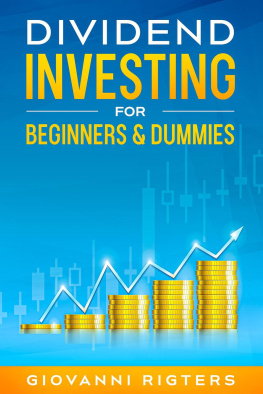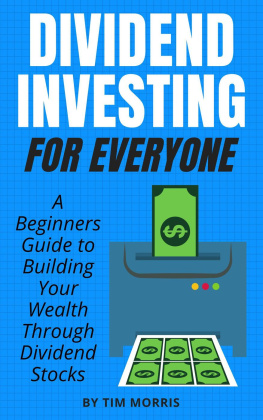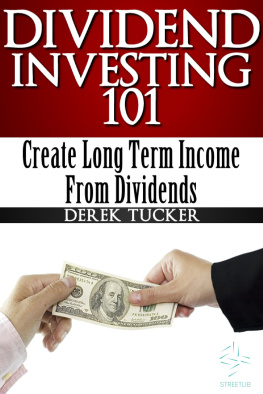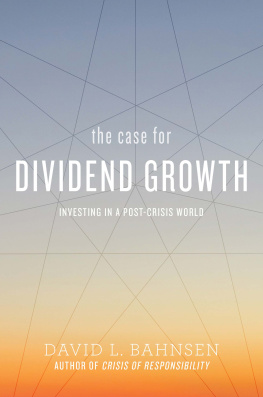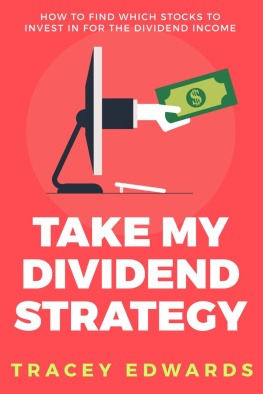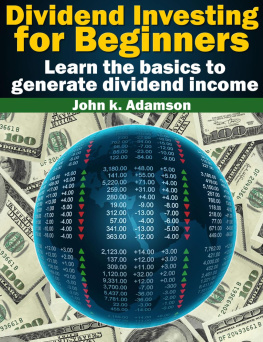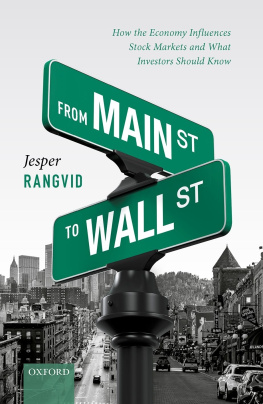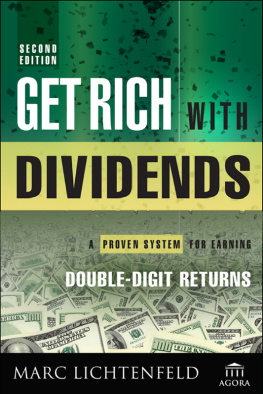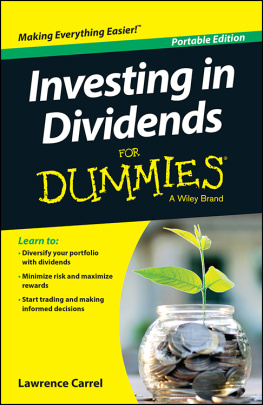
Copyright 2013 by Daniel Peris. All rights reserved. Except as permitted under the United States Copyright Act of 1976, no part of this publication may be reproduced or distributed in any form or by any means, or stored in a database or retrieval system, without the prior written permission of the publisher.
ISBN: 978-0-07-181880-3
MHID: 0-07-181880-4
The material in this eBook also appears in the print version of this title: ISBN: 978-0-07-181879-7, MHID: 0-07-181879-0.
All trademarks are trademarks of their respective owners. Rather than put a trademark symbol after every occurrence of a trademarked name, we use names in an editorial fashion only, and to the benefit of the trademark owner, with no intention of infringement of the trademark. Where such designations appear in this book, they have been printed with initial caps.
McGraw-Hill Education eBooks are available at special quantity discounts to use as premiums and sales promotions, or for use in corporate training programs. To contact a representative please e-mail us at bulksales@mcgraw-hill.com.
This publication is designed to provide accurate and authoritative information in regard to the subject matter covered. It is sold with the understanding that neither the author nor the publisher is engaged in rendering legal, accounting, securities trading, or other professional services. If legal advice or other expert assistance is required, the services of a competent professional person should be sought.
From a Declaration of Principles Jointly Adopted by a Committee of the American Bar Association and a Committee of Publishers and Associations
TERMS OF USE
This is a copyrighted work and McGraw-Hill Education and its licensors reserve all rights in and to the work. Use of this work is subject to these terms. Except as permitted under the Copyright Act of 1976 and the right to store and retrieve one copy of the work, you may not decompile, disassemble, reverse engineer, reproduce, modify, create derivative works based upon, transmit, distribute, disseminate, sell, publish or sublicense the work or any part of it without McGraw-Hill Educations prior consent. You may use the work for your own noncommercial and personal use; any other use of the work is strictly prohibited. Your right to use the work may be terminated if you fail to comply with these terms.
THE WORK IS PROVIDED AS IS. McGRAW-HILL EDUCATION AND ITS LICENSORS MAKE NO GUARANTEES OR WARRANTIES AS TO THE ACCURACY, ADEQUACY OR COMPLETENESS OF OR RESULTS TO BE OBTAINED FROM USING THE WORK, INCLUDING ANY INFORMATION THAT CAN BE ACCESSED THROUGH THE WORK VIA HYPERLINK OR OTHERWISE, AND EXPRESSLY DISCLAIM ANY WARRANTY, EXPRESS OR IMPLIED, INCLUDING BUT NOT LIMITED TO IMPLIED WARRANTIES OF MERCHANTABILITY OR FITNESS FOR A PARTICULAR PURPOSE. McGraw-Hill Education and its licensors do not warrant or guarantee that the functions contained in the work will meet your requirements or that its operation will be uninterrupted or error free. Neither McGraw-Hill Education nor its licensors shall be liable to you or anyone else for any inaccuracy, error or omission, regardless of cause, in the work or for any damages resulting therefrom. McGraw-Hill Education has no responsibility for the content of any information accessed through the work. Under no circumstances shall McGraw-Hill Education and/or its licensors be liable for any indirect, incidental, special, punitive, consequential or similar damages that result from the use of or inability to use the work, even if any of them has been advised of the possibility of such damages. This limitation of liability shall apply to any claim or cause whatsoever whether such claim or cause arises in contract, tort or otherwise.
Still for L.A.P.
Do you know the only thing that gives me
pleasure? Its to see my dividends come in.
John D. Rockefeller
Contents
Introduction
In early 2011, I published a bookThe Strategic Dividend Investorthat argued that investors should focus on dividends if they wanted to enjoy superior returns from their stock portfolios. At the time, the U.S. stock market had been offering investors a dividend yield (annual dividend/stock price) of 2% or less for over a decade, and the dividend payout ratio (dividends/profits) for the S&P 500 Index companies was around 30%. I pointed out that both of these figures were well below what they had been historically and what they ought to be from a financial math perspective. In that light, long-term investors would be well served to return their focus to dividend-paying and dividend-growing equities. Indeed, long-term returns were dominated by dividend payments and the growth of dividends, and dividend-focused portfolios had handily outperformed non- or low-dividend alternatives over all but the shortest measurement periods. Two years later, the situation remains little changed. If anything, as interest rates have moved even lower and the baby boomers have edged two years closer to retirement, the need for income by large swathes of the populationretirees, endowments, pension funds, etc.has become even more pressing.
This volume builds upon the first to address a much broader and arguably a more important issue: corporate America needs to pay higher dividends. At a time when the capital markets seem to alternate between scandal (Madoff, mortgage-backed securities, insider trading) and bubble (social networking companies like Facebook, Groupon, and their ilk) and are broadly distrusted by the public, a greater focus by Wall Street on dividends rather than just share prices would be good for everyone involved. Indeed, the toggling from bubble to scandal and back again is not accidental. It is evidence of the capital markets not working as well as they might. Given that business performance is cyclical and that the humans who make up the stock market have greed and fear and emotion in abundance, the cycle of boom and bust is not likely to cease anytime soon, but a greater reliance on using the stock market as a business investment platform, rather than as a grand casino available to all, would go a long way toward tamping down that volatility. Its easy to oversell an idea, and dividend payments from large, mature, publicly traded corporations are not a panacea for all of our financial and corporate ailments. In a back to basics period, however, putting our investment return expectations more rather than less on a cash basis would be a substantial improvement over the current situation, which is driven almost entirely by speculation in the price of stocks rather than by the receipt of cash distributions from ongoing enterprises.
Whats at stake? In 2011, it was around $480 billion. Over the past decade, it was over $3 trillion. Thats the amount of money that could have been paid by S&P 500 Index companies in dividends to investors and was instead redirected elsewhere, to share repurchase programs. Thats a sum large enough to interest the average investor and businessperson. But there is more to it than that. As I argue in the final chapter, whats really at stake is the trust relationship between Wall Street and Main Street. The year 2011, when The Strategic Dividend Investor was released, was one of protests against Wall Street excesses. The narrative of the 1% versus the 99% carried over into the 2012 presidential election. In that context, it might seem peculiar to be suggesting dividends would be part of the solution to the perceived failure of the capital markets to serve the best interests of the economy and the society at large. Or to put it another way, arent dividends the problem, and should we really concern ourselves with what made Mr. Rockefeller happy? It may strike some as a radical notion that dividends are not the problem, but part of the solution. The abuses in the stock market, and the misperception of stocks in general, are the main culprit, not the underlying businesses that feed, house, and equip our society and employ our workforce. And it is those businesses that quite properly ought to distribute their profits in the form of dividends, not only to the Rockefellers, but also to Main Street shareholders.


